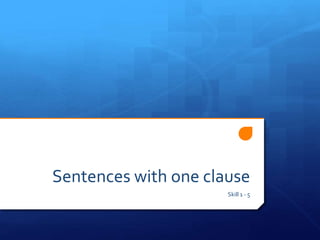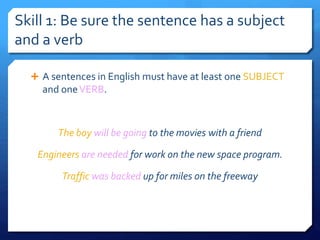This document outlines 5 skills for identifying subjects and verbs in sentences with one clause:
1. Ensure the sentence has at least one subject and one verb.
2. Be careful of objects of prepositions, which are not subjects.
3. Be careful of appositives, which can come before or after the subject.
4. Present participles can be verbs when accompanied by a form of "to be" or adjectives otherwise.
5. Past participles appear with "have" or "be" and can be verbs or adjectives, and their form is sometimes the same as the simple past tense.








